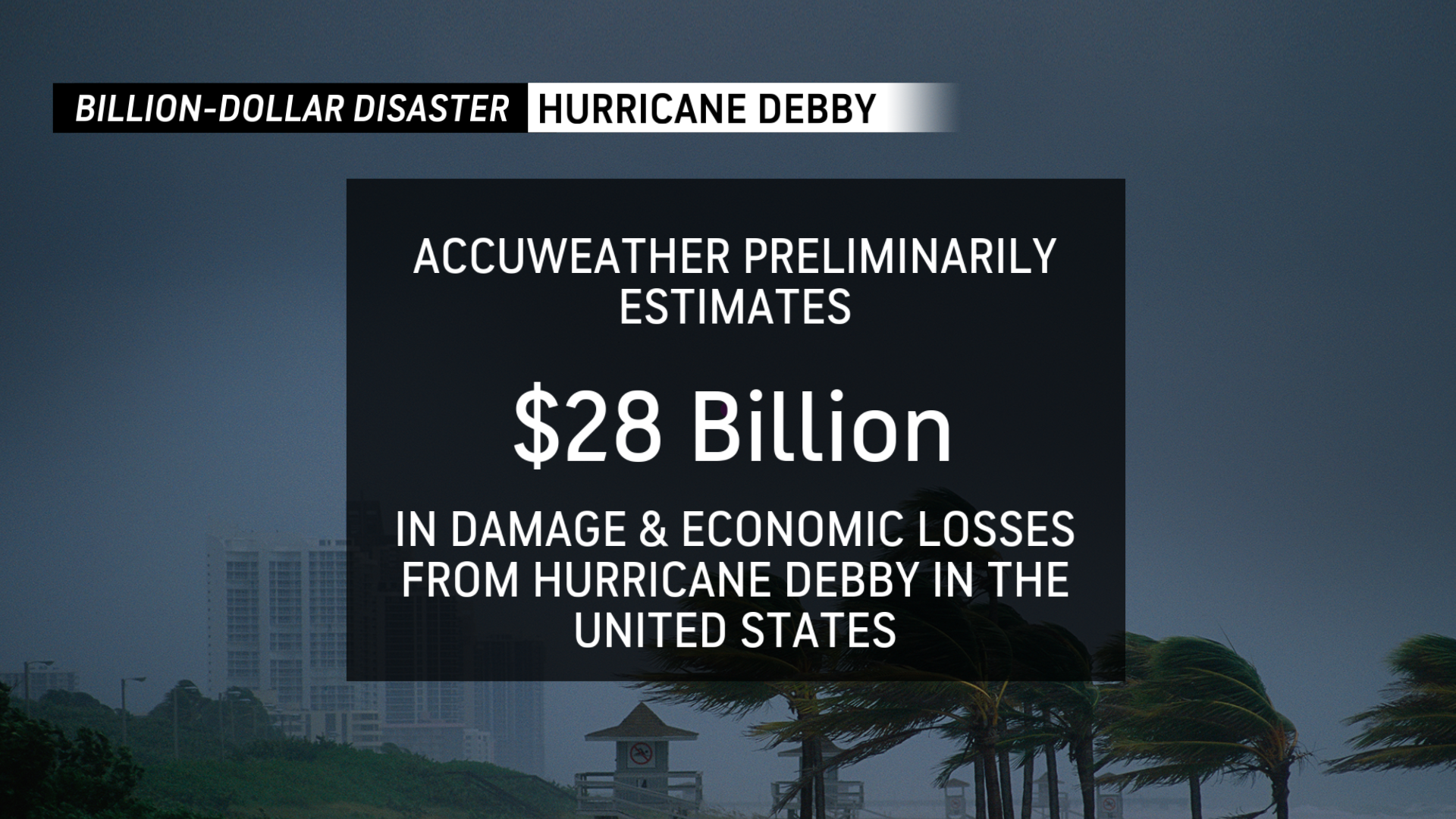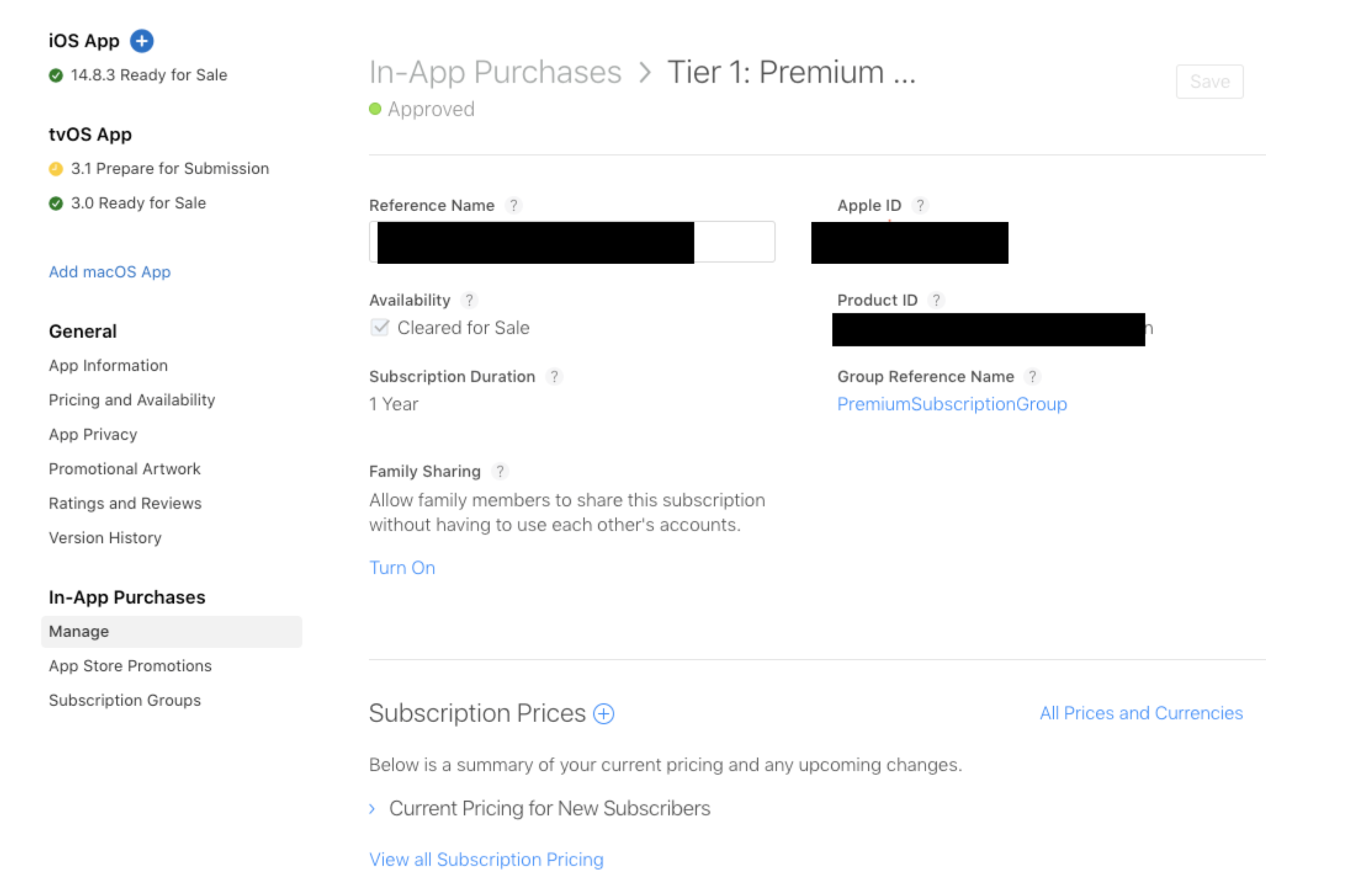AccuWeather meteorologists are available 24/7 to provide further insights and updates on evolving weather conditions. Please contact pr@accuweather.com during regular business hours, or support@accuweather.com or call AccuWeather’s Media Hotline at (814)-235-8710 at any time to arrange interviews with AccuWeather experts or to request the most updated graphics for print or broadcast.
AccuWeather’s Preliminary Estimate of the Total Damage and Economic Loss from Hurricane Debby in the United States is $28 Billion
AccuWeather Global Weather Center – August 9, 2024
AccuWeather’s preliminary estimate of the total damage and economic loss from Hurricane Debby in the United States is $28 billion. This is a preliminary estimate, as the storm effects are continuing to be felt and some areas have not yet reported complete information about damage, injuries and other impacts.

“Debby’s first landfall as a hurricane in Florida, second landfall as a tropical storm in South Carolina and its impacts along its trek across the eastern United States are widespread and will be long-lasting. Storm surge, flash flooding and tornadoes have damaged homes, businesses and schools, and in some cases, the damage is severe. Travel disruptions and beach erosion have resulted in significant economic losses for the tourism industry in coastal areas during a very busy part of the summer vacation season,” said AccuWeather Chief Meteorologist Jon Porter. “Thousands of flights were canceled, local curfews were ordered and many businesses were forced to close or reduce services to keep employees and customers safe, sometimes for multiple consecutive days. AccuWeather experts preliminarily estimate that the damage, losses, and extensive disruptions to business and commerce will result in a total damage and economic loss of $28 billion dollars.”
Ahead of Debby, storm surge flooding impacted the Gulf Coast of Florida, leaving property near the coast in population centers such as Fort Myers and Tampa under water. In Lee County, for example, a surge of 3.25 feet above the average high tide was reported. The storm then crawled across the southeast U.S., bringing more than a month’s worth of rainfall to many areas. Historic and catastrophic flooding is the result in parts of northern Florida and up the East Coast into the eastern Carolinas, Virginia and parts of the Northeast.
Debby will be long remembered for its flooding impacts, both at the coast and well inland. The hardest hit areas experienced a foot or more of rain in a day or two, leading to the devastating flooding that damaged homes and businesses and ultimately, sadly, has taken lives. Some of the highest rain totals reported thus far have included 21.06 inches in Tatem Ridge, FL, 18.25 inches in Summerville, SC, 15.25 inches in Kings Grant, NC, and 13.87 inches in Rincon, GA. The storm is still bringing a variety of dangerous impacts, including flooding rain, gusty winds and isolated tornadoes, through parts of the Middle Atlantic today and to the Northeast into tonight and tomorrow.
The highest wind gust reported from the storm was 99 miles per hour in Horseshoe Beach, FL, and the highest surge reported was 6.11 feet in Cedar Key, FL.
“Debby is the second billion-dollar storm to hit the United States this hurricane season. AccuWeather experts estimate Hurricane Beryl caused $28-$32 billion in damage and economic loss in the United States when it made landfall in Texas last month and spun up dozens of tornadoes from the Gulf Coast through upstate New York,” said Porter. “This hurricane season poses a major economic threat to the U.S. this year. AccuWeather continues to forecast an explosive season with 20-25 named storms and 4-6 direct impacts to the U.S. this year. We’re quickly approaching the historical peak of the Atlantic hurricane season in the coming weeks. People need to be prepared for more hurricane threats the rest of the summer and fall. As we’ve seen during Debby and Beryl, hurricanes not only create dangerous storm surge, wind gusts, and flooding threats along the coast; they can also bring flash flooding and tornado risks hundreds of miles inland, as well.”
AccuWeather exclusively issued the first track and related impacts of the storm 18 hours before the National Hurricane Center and any other known source, giving valuable additional life-saving notice to those in Debby’s path across Florida and the southeast U.S. AccuWeather also was first to warn that Debby would reach hurricane status before making landfall in the Florida Panhandle. It then made its way through the southeastern United States, over the Atlantic Ocean, and then made a second landfall as a tropical storm in South Carolina. AccuWeather meteorologists were also the first to accurately stress the risk for major flooding from Debby as a result of persistent downpours.
Importantly, on Sunday morning, more than a day before the storm made landfall, AccuWeather rated Debby a 3 in the U.S. on the AccuWeather RealImpact™ Scale for Hurricanes, specifically highlighting the risk for significant damage from widespread flooding caused by heavy rainfall as well as coastal flooding.
“It should not be a surprise to see AccuWeather’s exclusive $28 billion preliminary estimate for total damage and economic loss from Debby, given the urgency of AccuWeather’s communication about the major flooding risks and widespread disruption to business activities that we forecast the storm would cause this week from the Gulf Coast of Florida, right up through the southeastern U.S., into the Middle Atlantic and then New England. This is exactly the type of storm for which we created AccuWeather RealImpact™ Scale for Hurricanes, in order for people to better understand the wide-ranging threats that hurricane, tropical storm or hurricane can pose to their community,” Porter said.
Porter added, “AccuWeather specifically highlighted for days in advance of the storm that people should not be lulled into any false sense of security that Debby would be rated a tropical storm, not even a 1 designation on the Saffir-Simpson Hurricane Wind Scale, for much of the time it was doing damage over land areas. Tragically, we have seen many situations in the past where people have not prepared to the level that matched the dangerous threats that exist from such a storm due to the limitations of the Saffir-Simpson Scale, used by most meteorologists and the National Hurricane Center for decades, which only categorizes a tropical storm or hurricane by its wind intensity.”
In contrast to the Saffir-Simpson Hurricane Wind Scale, which classifies storms by wind speed only, the AccuWeather RealImpact™ Scale for Hurricanes is based on a broad range of important factors. In order to better communicate a more comprehensive representation of the potential impact of a storm to lives and livelihoods, the scale covers not only wind speed but also flooding rain, storm surge and economic damage and loss. Some of these hazards such as inland flooding and storm surge in many storms result in more deaths and economic loss than wind.
AccuWeather’s estimate largely accounts for damage to homes, businesses, infrastructure, facilities, roadways and vehicles as well as power outages, which results in food spoilage and interruption to medical care and reflects damage that has already occurred as well as expected damage yet to occur through tomorrow as Tropical Rainstorm Debby moves up through the Middle Atlantic and Northeast, bringing flooding rainfall and the risk for severe thunderstorms and tornadoes. Water damage tends to be particularly costly to repair and may either not be covered by homeowner’s insurance policies or underinsured relative to actual damage sustained for people who do carry additional flood insurance.
This estimate reflects damage and negative impacts to the economy that have occurred through the storm. Additional damage and negative impact to the economy are expected to accrue as the Middle Atlantic and Northeast continue to receive an onslaught of rain this afternoon into tomorrow, as well as gusty winds, storm surge flooding near the coast and the risk for tornadoes north and east of the storm track.
The calculation is based on an analysis incorporating independent methods to evaluate all direct and indirect impacts of the storm, includes both insured and uninsured losses and is based on a variety of sources, statistics and unique techniques AccuWeather uses to estimate the damage. It includes damage to property, job and wage losses, crops, infrastructure damage, interruption of the supply chain, auxiliary business losses and airport closures as well as flight delays. The estimate also accounts for the costs of evacuations, relocations, emergency management and the government expenses for and cleanup operations and the long-term effects on business logistics, transportation and tourism.
The negative impact to the economy from disruption of commerce was particularly notable with Debby as a result of the storm’s slow movement, causing the storm’s impacts to persist over parts of the southeastern U.S. for days, resulting in closure of some businesses, supply chain disruptions and other business interruptions. Additionally, tourism was substantially impacted especially in the southeastern U.S. at the worst possible time of the year, the prime of summer vacation season and the time that many small businesses may count on in order to drive profitability for the entire year.
To put this event into context, Hurricane Beryl brought $28-32 billion in total damage and economic loss in July. Last year Hurricane Idalia, which made landfall into the Big Bend of Florida, caused $18-20 billion in total damage and economic loss. Hurricane Ian, in 2022, caused $180-210 billion. Hurricane Florence, another prolific rainmaker for the Southeast and Middle Atlantic, caused $50-60 billion in damage in 2018.
Additional AccuWeather Resources:
















